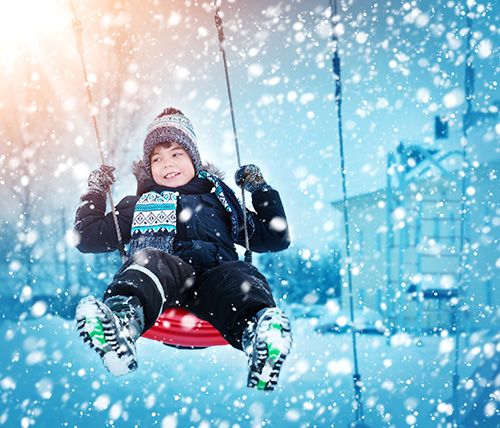|
Part of living in or visiting a place such as Canada that has beautiful, snowy winters involves dressing for the cold. The right clothing will keep you warm and safe in frigid weather.
Being too cold can quickly sap the enjoyment out of doing anything outside, so prepare yourself and your family for the cold by making sure you have the necessary gear and accessories for any outdoor winter activity. Here are the basics of getting properly dressed for the cold.

Layer Up
The most important strategy for staying warm and comfortable in the cold is to dress in layers. Wearing all of your layers at once will keep you toasty when it’s freezing, and it will also give you the option of removing some layers to prevent excessive sweating if you become too hot. The three main winter clothing layers are:
- The base layer
Your base layer is crucial for wicking perspiration away from your skin, helping to regulate your body temperature by keeping you dry and warm. Ideal fabrics for a base layer include merino wool and synthetic fabrics such as polyester. Cotton is best avoided, as it retains moisture and will leave you feeling wet, clammy, and cold.
- The middle layer
The purpose of the middle layer is to keep warm air trapped close to your body. Materials such as wool and fleece are among the best options for a middle layer. In very cold conditions, the thicker your wool or fleece sweater, the better. On the other hand, you’ll want to choose a thinner and more lightweight fleece or wool sweater to keep from over-heating during high-energy activities.
- The outer layer
Finally, the outer layer is all about weather protection. It provides a protective shell against rain, snow, and wind. Your outer layer needs to be waterproof or at least water resistant in order to do a proper job of keeping you warm, and it should be able to effectively block the wind as well. Proper ventilation is also a must in order to keep perspiration from condensing inside of the shell.
Don’t Forget to Accessorize
Winter accessories are the best accessories because they help you hang on to all of your extremities! Perhaps the most important winter accessory is a winter hat. Polyester, acrylic, wool, and fleece are all fabric options for a winter hat. For proper coverage of your neck and your face, try out different combinations of scarves, neck gaiters, and balaclavas to see what keeps you the warmest and most comfortable.
A quality pair of gloves or mittens is always important to keep on hand, even if you’re going to be outside for just a short while. Mittens are preferable if you need to be outside for an extended period of time because they keep your fingers together, which helps to keep them warmer.
Keep Your Feet Warm and Dry
Nothing will make you more miserable on a cold winter’s day than cold and wet feet. Never head outside on a cold, snowy day wearing wool socks and a regular pair of sneakers. Your best bet for keeping your feet warm and dry is to wear wool or synthetic fabric socks and properly insulated and water-resistant boots. If it’s a particularly chilly day and if your toes get cold easily, then consider doubling up on socks.
Once you’ve got all the right gear and you know how to wear it, you can head out and truly experience everything that winter has to offer. Keep warm as you go skating on a frozen lake, tobogganing down your community’s biggest hill, or as you just take a walk down the street under the falling snow.
|